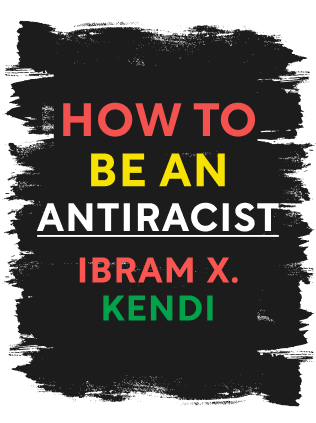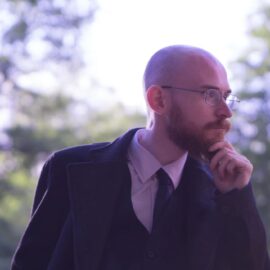

This article is an excerpt from the Shortform book guide to "How to Be an Antiracist" by tIbram X. Kendi. Shortform has the world's best summaries and analyses of books you should be reading.
Like this article? Sign up for a free trial here .
What is the stereotype of violent Blacks? How does this stereotype utilize bodily racism?
Bodily racism is the belief that some races are more primitive, dangerous, or violent. The belief that violent Blacks are the norm and to be expected is based on this type of racism.
Keep reading for more about the stereotype of violent Blacks and where it comes from.
Bodily Racism: Believing All Black People Are Violent Blacks
Bodily racism is a combination of racist policies and ideas that causes and maintains racial inequities, the main idea being the belief that people of certain races are more animal-like or dangerous than those of other races.
Example #1: Bill Clinton said that Black people have to understand White fear in America. He said that when White people encounter or see violence in the media, it’s often coming from Black people. This shows the stereotype of violent Blacks coming from the highest office.
Example #2: Cops are scared of Black people, even unarmed kids. The US population is 13% Black, but people killed by police are disproportionately Black—in 2018, 21% of people killed by police were Black. White people are half as likely to be killed by police as Black people.
Fact Checking the Stereotype of Violent Blacks
In reality, there are no inherently violent or dangerous races. Researchers have found that there’s a much stronger correlation between unemployment and violent-crime levels than race and violent crime levels, for example:
- A study of youth data from 1976-1989 found that young White males did less violent crime than Black ones, however, when the researchers looked at employed young males, there were no differences.
- Another study found that a 2.5% decrease in unemployment created a decrease in robbery, auto theft, larceny, and burglary, between 1992 and 1997.
- Karen F. Parker, a sociologist, found that between 1990 and 2000, an increase in Black-owned businesses reduced Black youth violence.
Additionally, all-Black neighborhoods have varying levels of crime. If Black people were inherently violent Blacks, crime levels in all-Black neighborhoods would be the same. Middle- and upper-income neighborhoods—in which people who have jobs tend to live—are less violent than low-income neighborhoods.
History and Invention of Bodily Racism
White people have consistently associated Black people with violence. Historical figures such as colonizer Captain John Smith called Black people “devilish” in 1631. In 1903, senator Benjamin Tillman said that Africans were “fiends” and “wild beasts.” Today, Americans view Black people’s bodies as more dangerous and violent than White people’s, even when they’re the same size.
This view of Black people as violent Blacks or dangerous resulted in laws targeting violent crime that disproportionately affect Black people, such as the 1994 Violent Crime Control and Law Enforcement Act. This act created new minimum sentences, capital offenses, prisons, and federal three-strike laws. It also increased the number of police officers and made it possible to try anyone thirteen or older as an adult.
In response to the proposed act, the Congressional Black Caucus asked for additional funding for violence-prevention and drug treatment programs. Republicans opposed the funding and demanded it be significantly cut before they would support the bill. Democrats and members of the Black Caucus caved. They didn’t want to entirely lose funding, and they also believed the Black body was dangerous.
However, racist Americans didn’t think this act was enough. In 1995, John J. DiIulio Jr., a political scientist at Princeton, warned that “super-predators” were coming. Super-predators were a new generation of criminals developing in Black inner-city neighborhoods. Youth were being influenced by others in the neighborhood and raised with violent inclinations. DiIluio thought this generation would spawn the worst criminals to ever exist.
Superpredators never materialized and violent crime levels went down. In 1993, 7.4% of urban residents were victims of violent crime, but the percentage declined throughout the 90s, and in 2016 it was 3%. Researchers don’t completely trust these numbers—they think that many violent crimes aren’t reported. But even taking that into account, the numbers are a far cry from the idea that Black neighborhoods are perpetually and inherently violent.
Ibram’s Experiences With Bodily Racism
Ibram had internalized, complicated, contradictory feelings about bodily racism growing up. In ninth grade, he went to a high school in central Queens that had a large population of Black, Asian, and Latinx students, and Ibram was scared of the other Black kids. There were some legitimately scary Black kids at his school, such as Smurf, who beat up kids on the bus and once pulled a gun on Ibram. Ibram defused the situation by telling Smurf he wasn’t scared and complimenting the weapon. Smurf bullied other people too, and Ibram was never brave enough to step in, which he regrets to this day.
However, a good portion of the time, Ibram’s fears of other Black people were unfounded. If he accidentally bumped into someone in the hall or walked through a group of crew members, nothing happened. The disinterested teachers, overcrowding, and large class sizes were probably more dangerous than the students.
Ibram’s parents also worried about other Black people. They didn’t like it when Ibram played basketball at neighborhood courts—they worried he’d get shot—and Ibram’s father eventually built a court in the backyard.
At the same time, Ibram thought his neighborhood was safe enough. He knew it had certain dangers but he didn’t think it was a hellhole of violence, and he never connected the violence to Blackness.

———End of Preview———
Like what you just read? Read the rest of the world's best book summary and analysis of Ibram X. Kendi's "How to Be an Antiracist" at Shortform .
Here's what you'll find in our full How to Be an Antiracist summary :
- What racism is and how it evolved
- How you might have subtle racist thoughts and not even be aware of them
- Why being "not racist" isn't good enough






